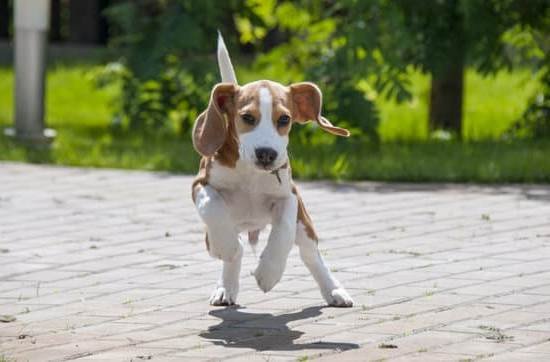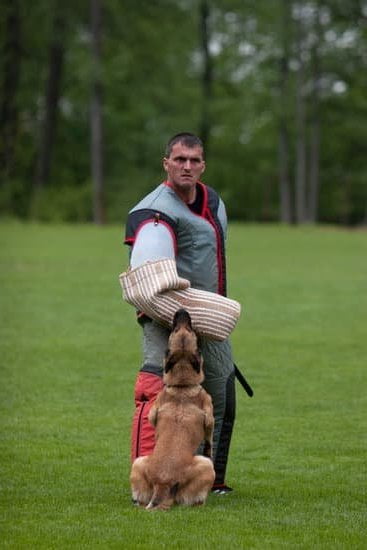Crate training a dog in an apartment is a great way to ensure your dog has a safe, comfortable place to sleep and stay while you’re away. It can also help with potty training and preventing destructive behavior.
The key to successful crate training is to make the crate feel like a safe, comfortable place for your dog. Start by putting a soft blanket or towel in the crate and giving your dog a few treats to chew on. Once your dog is comfortable going in and out of the crate, start closing the door for short periods of time. Gradually increase the amount of time your dog spends in the crate.
If your dog is having trouble adjusting to the crate, try putting the crate in a quiet, dark room. You can also try covering the crate with a blanket to create a cozy environment.
If you’re using the crate for potty training, make sure to take your dog outside regularly to pee and poop. Reward your dog with a treat when he or she goes potty in the appropriate spot.
Crate Training Old Dog
One of the most common issues pet owners face is how to train an old dog. Contrary to popular belief, it is not too late to train an old dog and get them to obey your commands. It is important to start crate training as soon as possible to make the process easier.
The first step is to introduce your dog to the crate and make it comfortable. Place some soft blankets and toys inside the crate and let your dog explore. Once your dog is comfortable with the crate, start feeding them their meals inside the crate. This will help them associate the crate with positive things, such as food.
Once your dog is comfortable eating inside the crate, start closing the door for a few minutes at a time. Gradually increase the amount of time the door is closed. If your dog starts to whine or bark, open the door and let them out. Do not give them any attention for whining or barking, as this will only reinforce the behavior.
Once your dog is comfortable spending short periods of time in the crate, start leaving them there for longer periods of time. If your dog starts to whine or bark, do not open the door. Wait until they stop whining or barking and then let them out.
The key to crate training an old dog is patience and consistency. Be patient and keep taking small steps until your dog is fully trained.
Dogs Crate Training
There are a lot of misconceptions about crate training dogs. Some people think that it is cruel to crate a dog, but that is not the case at all. Crate training is actually a very humane way to train your dog.
The main purpose of crate training is to provide your dog with a safe and comfortable place to sleep. Dogs are naturally den animals, and they feel safe and secure when they are in a crate.
Crate training can also be helpful in housebreaking your dog. When you first start crate training, you will want to put your dog in the crate for short periods of time. As your dog becomes more comfortable with the crate, you can start to leave him in the crate for longer periods of time.
If you are using the crate to housebreak your dog, you will want to make sure that you put him in the crate right after he has had a potty break. This will help him to associate the crate with going to the bathroom.
If you are using the crate for training purposes, you will want to make sure that you always give your dog plenty of water and access to food. You should also never use the crate as a punishment.
If you are crate training your dog, it is important to make sure that the crate is the right size. The crate should be big enough for your dog to stand up, turn around, and lie down in. If the crate is too small, your dog will become anxious and uncomfortable.
The best way to crate train your dog is to start early. Puppies are typically the easiest to crate train, but it is never too late to start. If you have an older dog who is not currently crate trained, you will need to be patient and take things slowly.
If you are using a crate to train your dog, you will want to make sure that the crate is the right size. The crate should be big enough for your dog to stand up, turn around, and lie down in. If the crate is too small, your dog will become anxious and uncomfortable.
How To Train Dog Not To Poop In Crate
There are a few different methods you can use to train your dog not to poop in their crate. Crate training is a great way to house train your dog, but it can also be tricky to keep the crate clean if your dog decides to go to the bathroom in it.
One way to train your dog not to poop in their crate is to put them on a regular potty schedule. Take your dog outside to pee and poop every hour, on the hour. If your dog goes to the bathroom in their crate, take them outside right away and scold them. Reward them with a treat when they go to the bathroom outside.
Another way to train your dog not to poop in their crate is to put them on a potty training schedule. Take your dog outside to pee and poop every morning and evening, and after every meal. If your dog goes to the bathroom in their crate, take them outside right away and scold them. Reward them with a treat when they go to the bathroom outside.
If you are consistent with these methods, your dog will eventually learn not to poop in their crate.
Crate Training Dog Barking At Night
There are many reasons why dogs bark at night, but one of the most common reasons is because they are crate trained and have been conditioned to believe that they need to bark in order to get out. This can be a difficult behavior to break, but there are a few things that you can do to help.
The first step is to make sure that you are putting your dog in his crate for the right reasons. Dogs should only be crated for short periods of time, and should only be crated when you are home to supervise them. If your dog is barking in his crate because he is bored or lonely, you need to find other ways to keep him entertained and stimulated.
If your dog is barking in his crate because he is uncomfortable or afraid, you need to work on helping him feel more comfortable in his crate. You can do this by gradually increasing the amount of time that he spends in the crate, and by providing him with some toys or treats that he can chew on to help calm him down.
If your dog is barking in his crate because he is trying to get out, you need to work on teaching him to be quiet. You can do this by rewarding him each time he barks quietly, and by gradually increasing the amount of time that he is required to be quiet before he is released from the crate.

Welcome to the blog! I am a professional dog trainer and have been working with dogs for many years. In this blog, I will be discussing various topics related to dog training, including tips, tricks, and advice. I hope you find this information helpful and informative. Thanks for reading!





